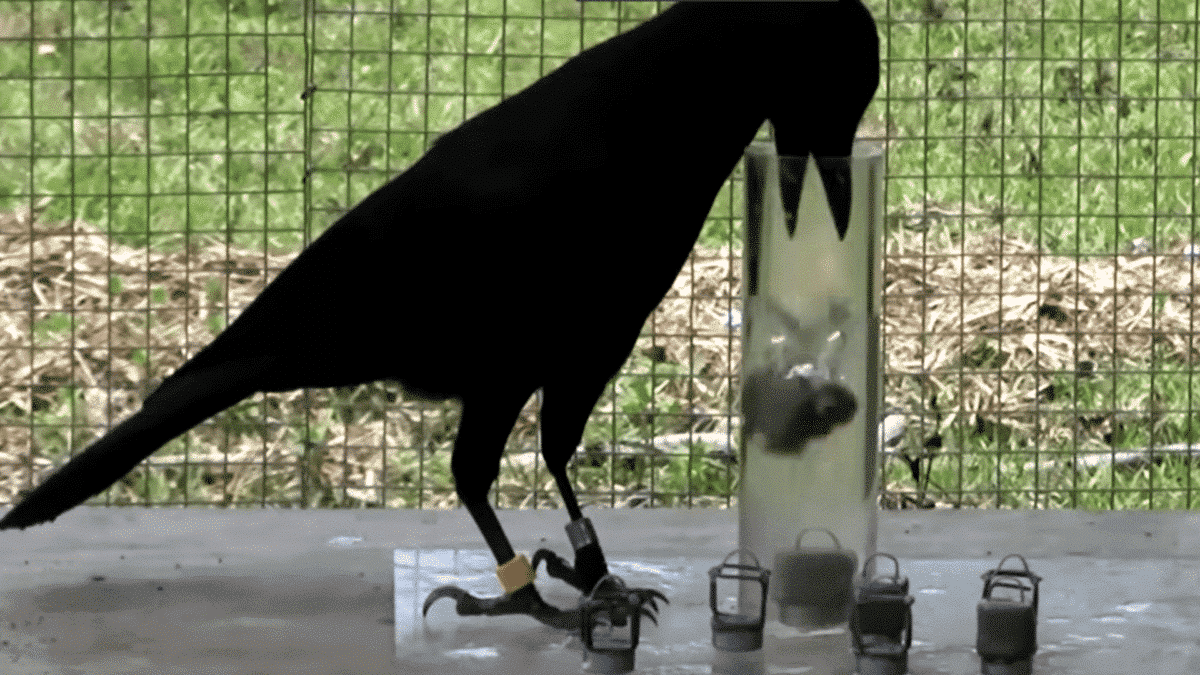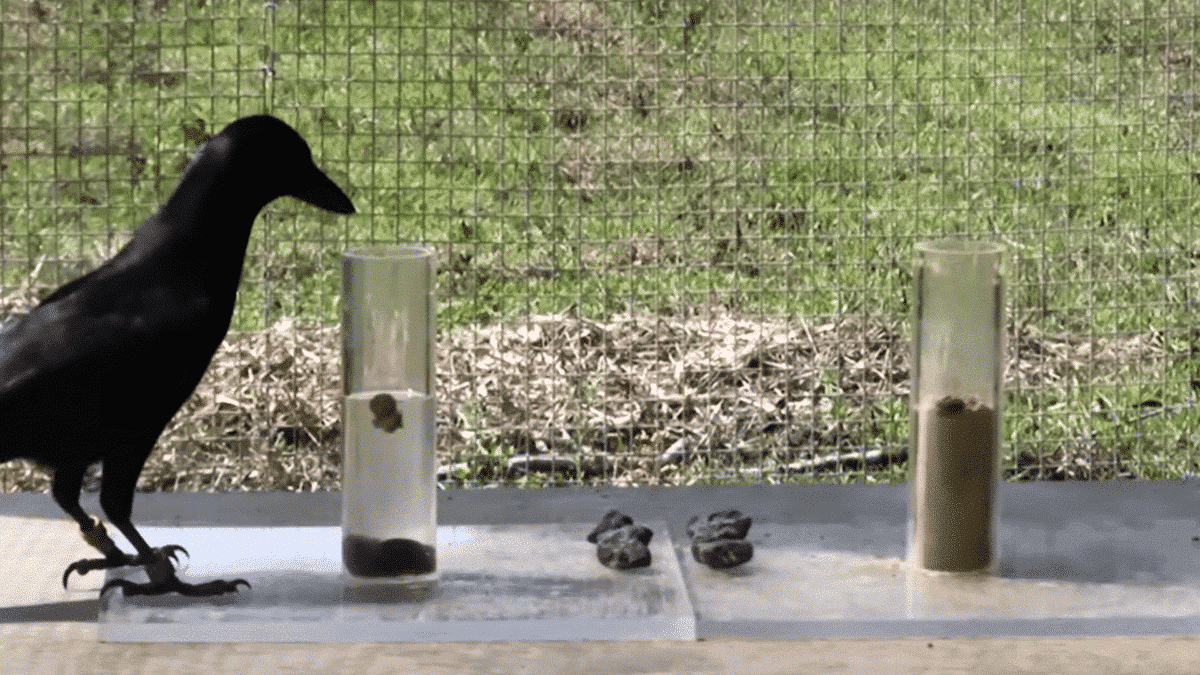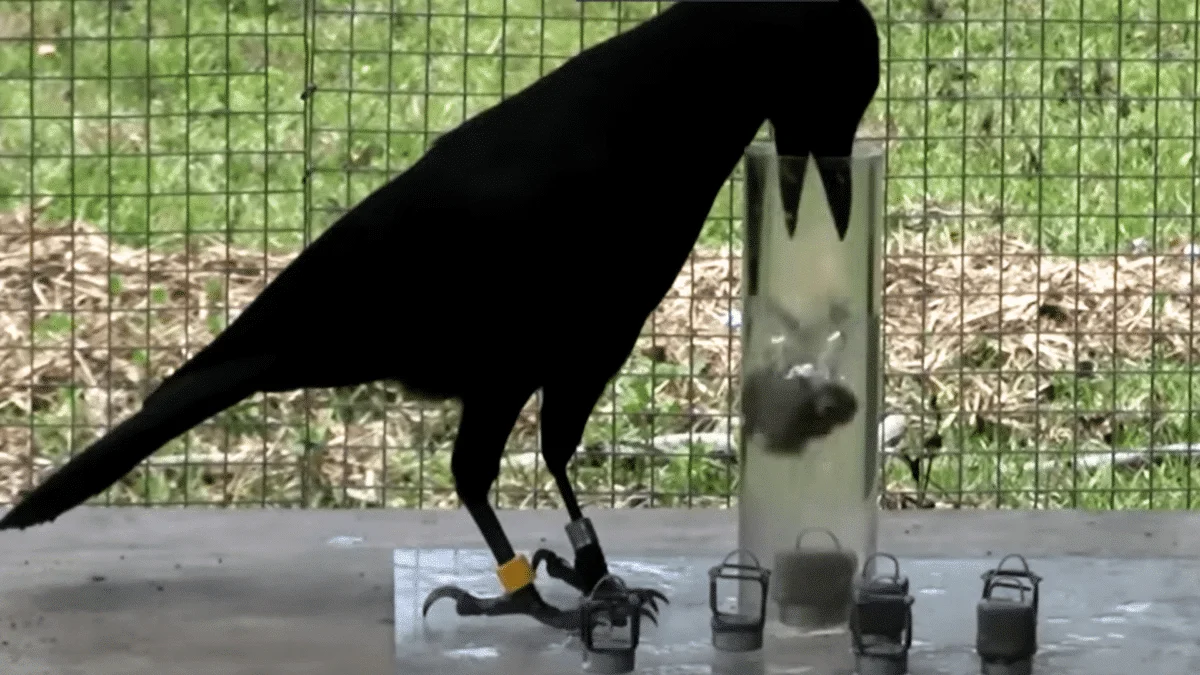The story of a crow’s problem-solving with pebbles and physics to raise water in a pitcher, famously depicted in Aesop’s Fable, is more than a mere tale. Recent studies have shed light on the remarkable intelligence of crows, particularly their ability to manipulate their environment to solve complex problems. This article delves into the fascinating world of clever crows, exploring their cognitive abilities and the implications of their problem-solving skills.

The Experiment: Echoes of Aesop’s Fable
In a groundbreaking study by researchers from the University of Cambridge, rooks, which are members of the crow family, demonstrated their ability to solve complex problems using tools. Mirroring the actions of the crow in Aesop’s fable, these rooks used stones to raise the water level in a tube to reach a worm floating on top.
Key Findings from the Study
- Problem-Solving Skills: The rooks successfully completed tasks that involved using stones to increase water levels, displaying an understanding of basic physics principles.
- Selective Reasoning: When presented with varying sizes of stones, the rooks showed the ability to choose larger stones over smaller ones, understanding that larger stones displace more water.
- Distinguishing Between Materials: The rooks demonstrated the ability to differentiate between materials, choosing to drop pebbles in water rather than in sawdust, indicating a sophisticated level of causal understanding.
Watch Crows Problem Solve With Physics
Crows vs. Children: A Comparative Perspective
Another study, conducted by the University of Auckland, revealed that New Caledonian crows possess a causal understanding of water displacement on par with 5-7-year-old children. These crows completed tasks like dropping stones into water-filled tubes instead of sand-filled tubes and using sinking objects over floating objects. Their performance on these tasks indicates a sophisticated, albeit incomplete, understanding of the causal properties of volume displacement.
The Limits of Avian Intelligence
Despite their impressive abilities, the crows showed limitations. They struggled with tasks that required understanding the width of the tube or dealing with counterintuitive cues in a U-shaped displacement task. These findings point to the sophisticated nature of their intelligence, yet underscore the boundaries of their cognitive capabilities.
Implications and Insights
Reflecting on Human Cognition
These studies not only illuminate the intelligence of crows but also offer insights into the development of cognitive abilities in humans. By comparing the problem-solving skills of crows with those of young children, researchers gain a unique perspective on the evolution and development of intelligence across species.
Environmental Adaptation and Tool Use
Interestingly, while rooks have the capability to use tools, they do not typically do so in the wild. This absence of tool use is attributed to the lack of necessity rather than a lack of ability, aligning with the principle that necessity is the mother of invention. This observation offers a fascinating glimpse into how environmental factors shape the development and utilization of cognitive skills in different species.
Final Thoughts On Crows Problem Solve With Physics

The ability of crows and rooks to solve complex problems through tool use and reasoning is a remarkable testament to their intelligence. These studies not only confirm the narratives of ancient fables but also open new avenues for understanding the cognitive abilities of birds.
You May Also Like:
- Crow Lands On A Moving Truck
- Bald Eagle Grabs Cat for Breakfast in Wisconsin
- Watch a Massive Eagle Outmaneuvers A Crow
- Watch: Komodo Dragon Devours Massive Moray Eel - March 25, 2024
- Watch As Lions Try Take Buffalo Down for Hours - March 12, 2024
- Mysterious Stingray Pregnancy: Is The Father A Shark? - March 12, 2024


